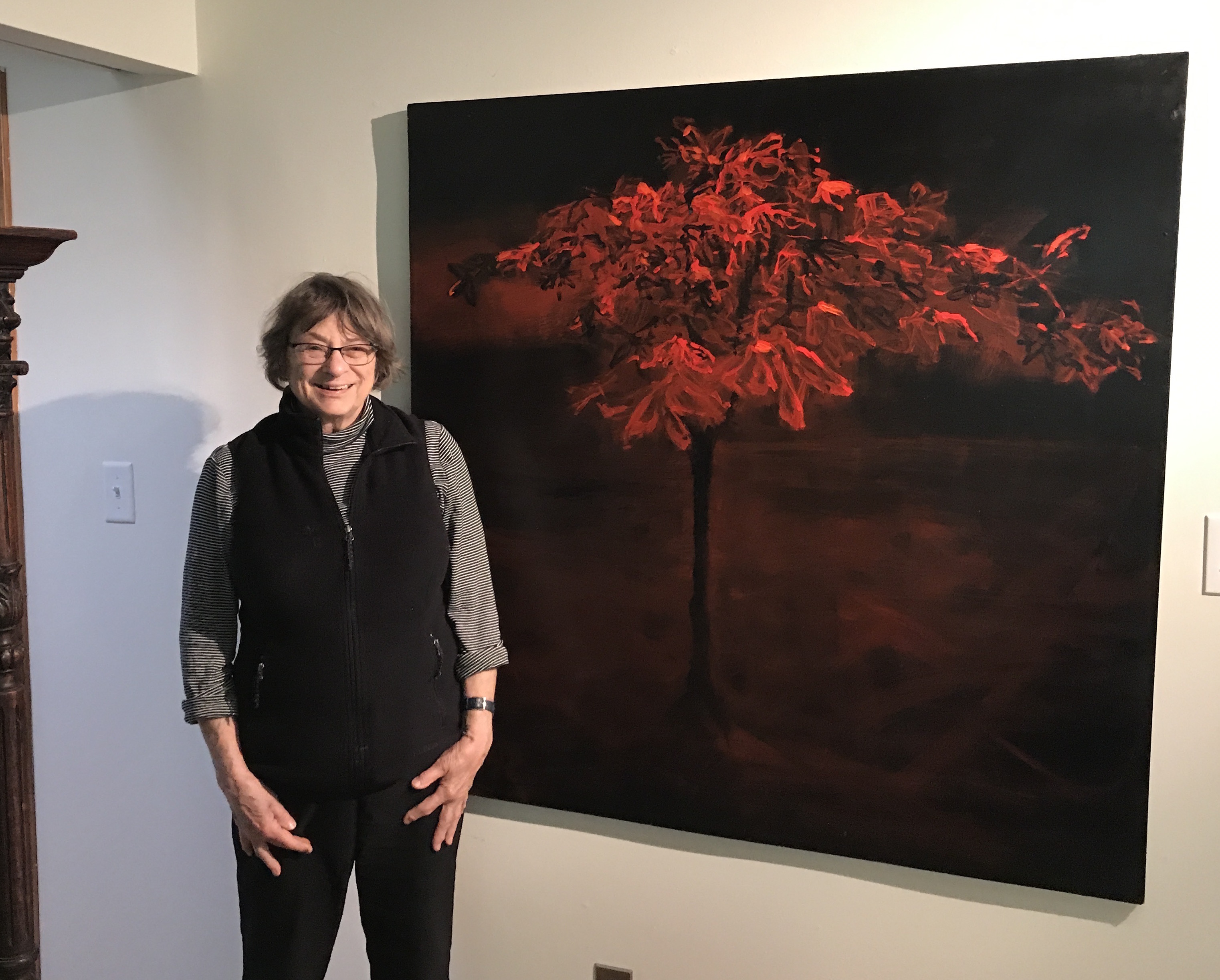“My mother was an artist, so in a way I’ve been painting since I was about 6,” says Holliston oil painter Betty Glick, who became serious about the art later in life.
“In my 30s, I became a potter, and I did that for 25 years. My business partner and I did a line of high-fired functional pottery and sold to wholesale shows. In 1999, my father died, and for some reason, I wanted to paint.”
Glick, who’d studied some painting and illustrating at MassArt., wrapped up her pottery business and switched mediums.
“I was 59 when I really started considering myself an artist painting,” she says. She and her husband had had a house in Spain at the time, and she began painting landscapes from a third floor window there. When she came back to the states, she sought training in technique at the Danforth Museum, where she studied under well-known painter Michael Dowling.
“He was a huge influence on me,” says Glick. “That’s what I learned what painting was all about.”
Painting, for Glick, is a “process of discovery, of revealing something that’s true about the world in visual terms rather than verbal ones. You can’t really explain what a painting is about, they’re just transcendent. It’s not about a woman pouring milk. It’s something much bigger than that. The experience of deeper truth is done in terms of color and light and composition,” she says.
The abstract artist, also an amateur musician and singer, likens appreciating paintings to listening to music.
“You don’t ask a piece of music to explain itself,” she says.
Glick believes Americans have a more difficult time accepting abstract painting than even ordinary people anywhere in Europe.
The painter says the most dramatic experience she ever had with art was her encounter with a work by American artist Franz Kline. “He painted these bold, black and white paintings, and the scale! That was my first real understanding of what abstract painting was. After that, I was drawn to all the abstract expressionists. I really loved their work.”
Although Glick has primarily used canvas, she has recently begun to work with small, smooth, wood panels, nothing more than 30”. She makes her own gesso, like a guash, similar to what Renaissance painters used, from marble dust and glue.
“It makes a kind of chalky surface, brilliant white,” she says, excitedly.” You can scrape the oil paint on with an old scraper, and the white shows through. It seems to be transparent, but it really isn’t.”
Painting on a smaller scale enables Glick to use more expensive, high-quality paints in the thick, chunky style she prefers.
She doesn’t start off painting, necessarily, with an idea, but the artist says her result will sometimes be a subconscious manifestation of something particular.
“I did this painting I just thought was an abstract painting,” she says. “Somebody bought it from me, a fellow student, and said to me, ‘Well, it’s the World Trade Center towers.’ And it was those two towers and I didn’t even know it! It’s because that was in my head when I was laying the paint down. They were exactly the way you saw them in those photographs. It was really astounding.”
Glick has shown her work at the Galatea Gallery in Boston, as well as the Arsenal Center for the Arts, The Amazing Things Art Center in Natick, and at the Boston Center for the Arts. In addition to Open Studios, you can see her work at www.bettyglick.com.

Issue Date:
November, 2018
Article Body:
